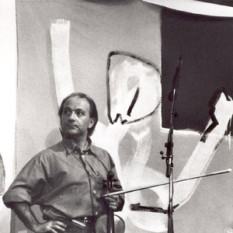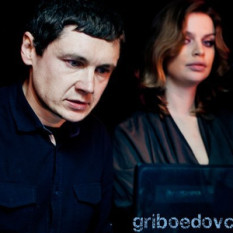1.Conceptualism is a doctrine in philosophy intermediate between nominalism and realism that says universals exist only within the mind and have no external or substantial reality.
2.Conceptual art is art in which the concept(s) or idea(s) involved in the work take precedence over traditional aesthetic and material concerns. Many of the works, sometimes called installations, of the artist Sol LeWitt may be constructed by anyone simply by following a set of written instructions. This method was fundamental to LeWitt's definition of Conceptual art, one of the first to appear in print:
"In conceptual art the idea or concept is the most important aspect of the work. When an artist uses a conceptual form of art, it means that all of the planning and decisions are made beforehand and the execution is a perfunctory affair. The idea becomes a machine that makes the art."
3.In popular music, a concept album is an album that is "unified by a theme, which can be instrumental, compositional, narrative, or lyrical". Commonly, concept albums tend to incorporate preconceived musical or lyrical ideas rather than being improvised or composed in the studio, with all songs contributing to a single overall theme or unified story. This is in contrast to the practice of an artist or group releasing an album consisting of a number of unconnected (lyrically or otherwise) songs performed by the artist.
4. Musical minimalism had its origins in both conceptualism and twelve-tone music.
In 1960, Terry Riley wrote a string quartet in pure, uninflected C major. In 1963 Riley made two electronic works using tape delay, Mescalin Mix and The Gift, which injected the idea of repetition into minimalism. In 1964, Riley's In C made persuasively engaging textures from layered performance of repeated melodic phrases. The work is scored for any group of instruments. In 1965 and 1966 Steve Reich produced three works—It's Gonna Rain and Come Out for tape, and Piano Phase for live performers—that introduced the idea of phase shifting, or allowing two identical phrases or sound samples played at slightly differing speeds to repeat and slowly go out of phase with each other. Starting in 1968 with 1 + 1, Philip Glass wrote a series of works that incorporated additive process (form based on sequences such as 1, 1 2, 1 2 3, 1 2 3 4) into the repertoire of minimalist techniques; these works included Two Pages, Music in Fifths, Music in Contrary Motion, and others. By this point, development of a minimalist style was in full swing. .
5. Danger Music is an experimental form of avant-garde 20th and 21st century classical music. It is based on the concept that some pieces of music can or will harm either the listener or the performer. Since the performances must nearly always be canceled before they can be performed, danger music can also be thought of more as a philosophical or political statement than as a composition of music. For example Takehisa Kosugi’s composition Music for a Revolution[1] directs the performer to gouge out one of his or her eyes five years from now. Works such as this are also sometimes referred to as antimusic because they seem to rebel against the concept of music itself. Danger Music is often closely associated with the Fluxus school of composition.
6. A conceptual definition is an element of the scientific research process, in which a specific concept is defined as a measurable occurrence. It basically gives you the meaning of the concept. It is mostly used in fields of philosophy, psychology, communication studies. This is especially important when conducting a content analysis.
Examples of ideas that are often conceptually defined include intelligence, knowledge, tolerance, and preference.
Following the establishment of a conceptual definition, the researcher must use an operational definition to indicate how the abstract concept will be measured. .


